
SPAIN: Public services began using the Pajares Base Tunnel through the Cordillera Cantábrica mountain range in the north of the country on November 30 following formal opening celebrations attended by King Felipe VI the previous day.
The opening of the 50 km Variante de Pajares, which includes the 28·4 km base tunnel and 40·4 route-km of tunnels overall, removes the need for trains to traverse a sinuous high-altitude pass between León and Oviedo. Under construction since 2004, the route has long been seen as a strategic priority to reduce the journey time between Madrid and towns and cities in Asturias.
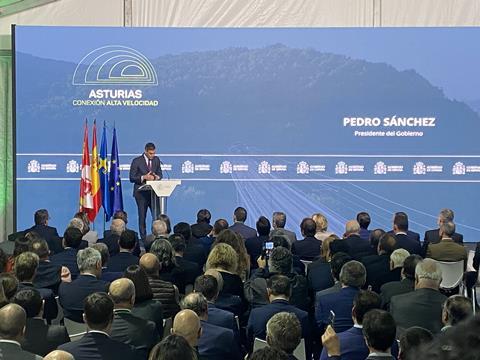
The cost of the cut-off is now estimated to be at least €3∙7bn, an increase of €2bn on the original forecast, under which the line should have been ready for traffic in 2010. The base tunnel itself has a design speed of 275 km/h, with the rest of the alignment being designed for 200 km/h operation.
Royal train
A ceremonial inaugural train left Madrid Chamartín at 13.35 on November 29. Onboard were King Felipe VI, Prime Minister Pedro Sánchez, recently appointed transport minister Óscar Puente, head of the regional government of Castilla y León, Alfonso Fernández Mañueco, and his counterpart from Asturias, Adrián Barbón. The train took 3 h 10 min to reach Oviedo, where it was greeted by a gaita or Asturian bagpiper.
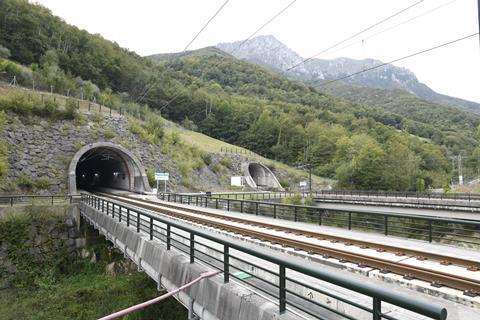
An initial five Madrid – Oviedo – Gijón return trains per day are being run by RENFE using Class S130 Talgo gauge-changing trainsets. The typical end-to-end journey time is around 3 h 50 min for the 508 km run, with the opening of the Variante cutting travel times by just over 1 h. From mid-2024, RENFE is expected to introduce more trains and replace the S130 trainsets with Talgo Avril S106 formations; it also plans to launch a low-cost Avlo service between Gijón and the capital, calling at all intermediate stations.
Overcoming ‘geological barriers’
Speaking at the opening ceremony, Prime Minister Sánchez said that the Asturias region had ‘reversed previous railway isolation’ with the new high capacity, high speed line.
‘Asturias and Castilla y León are opened to new investments and opportunities’, he added. ‘Today, the geological barriers that separate Asturias from the rest of the peninsula are less imposing. This momentum does not stop here. There is a portfolio of more than €9bn in progress to deploy high speed lines in other territories such as Cantabria, the Basque region, Navarra and Extremadura; and to continue advancing in the Mediterranean and Atlantic corridors, strategic bets that will contribute decisively to structuring our territory and making it more competitive.’
President of the Asturias regional authority Adrián Barbón insisted that ‘as of today, Asturias is closer to believing that it has more of a future than a past. The opening of the Pajares is the breaking down of a psychological barrier. From this day in history, the principality will begin the decade of change with a hunger for the future.’
The region is pinning its hopes on a major spike in tourism, with the local government expecting the number of visitors using rail to reach Asturias to grow from the present 260 000 per annum to more than 600 000.
Gauge complexity
Initially planned in the 1990s, the cut-off has been subject to many delays in design and construction, partly resulting from changes to project scope and tweaks to the government’s policy on the development of new lines.
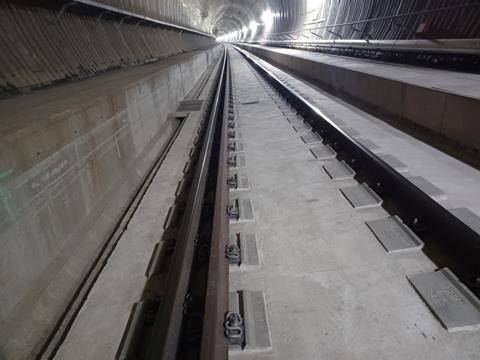
The result is a railway that is operationally highly complex, not least because of the mix of standard and 1 668 mm gauge track that has been used. While most of the railways in the region use broad gauge, Spanish policy has generally favoured 1 435 mm gauge for high speed lines.
However, it became clear over the course of the Pajares project that building an entirely new network in Asturias is unlikely to be viable in the foreseeable future, and that in any case the base tunnel route would also need to be used by freight. As a result, gauge-changing stations are located at León and Campomanes, close to the northern portal of the tunnel, and the tunnel itself has one broad-gauge bore and one dual-gauge running line. The broad-gauge line is laid on sleepers which can be converted to 1 435 mm gauge in the future.
Similar complexity applies to the electrification. The cut-off is energised at 25 kV 50 Hz, to match the 1 435 mm gauge high speed line between León and Madrid. But the sections of route either side of the mountain range are still wired at the legacy 3 kV DC. This means that a passenger operator seeking to use the route to Asturias north of Pola de Lena needs to have a fleet of variable-gauge, multi-system trainsets to run; only RENFE’s fleet meets this requirement at present. In the freight market, operators also need multi-system electric locos to avoid resorting to diesel traction.
Legacy route
Opening of the Variante has raised doubts over the future of the legacy line over the Rampa de Pajares, even if this would be of considerable use to private operators or new entrants lacking multi-system rolling stock.
The transport ministry has suggested that maintaining the old line could require expenditure of around €700m in the next 15 years. The line at present has numerous temporary speed restrictions, some as low as 30 km/h, and there are frequent failures caused by life-expired electrification equipment. In severe weather, there is also a real risk of landslides, while snow can be a problem in winter.
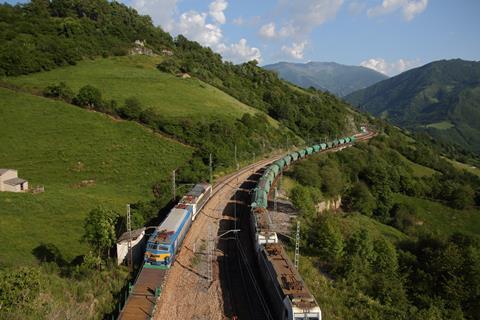
On November 19, ALSA Rail operated a charter train between Gijón and Villamanín hauled by a Class 269 electric loco, on which almost all of the 260 seats were sold. Passengers were a mix of railway enthusiasts and local people, and the trip took place in fine weather, prompting the private operator to assess the potential for tourist travel in the summer season in future. ALSA Rail has a maintenance base in Asturias and retaining a 1 668 mm gauge link to the south with DC electrification would be operationally beneficial.
Disruption to other base tunnel corridors in Europe this year, notably the Gotthard in Switzerland, has also highlighted the importance of redundancy in national and international rail networks.
Gijón extension
At the start of work on the Pajares project in 2004, the government had firm plans to extend the high speed network further north to Gijón, with a view to cutting the travel time between the city and Madrid even further to around 2 h 30 min.
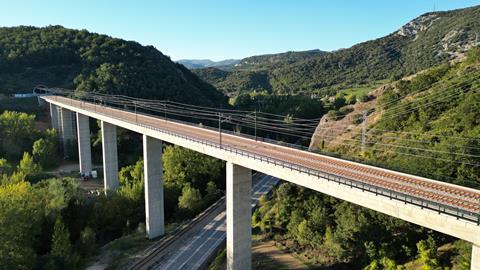
However, questions were raised over subsequent years about the optimal route for the extension, particularly because the initial proposals avoided the centre of Oviedo and included a station on the eastern edge of Gijón.
In 2016, the government put forward a revised route that served the city centres of both Gijón and Oviedo, but this required much more tunnelling. Since then, the plans have made little progress, and there is considerable doubt about whether standard gauge tracks will ever be laid north of Pola de Lena. A more practical option could be conversion of more of the Asturian network to mixed gauge, reflecting practice elsewhere in the north of the country, notably on the ‘Basque Y’ scheme which includes a dual-gauge corridor to the French border at Hendaye.


















